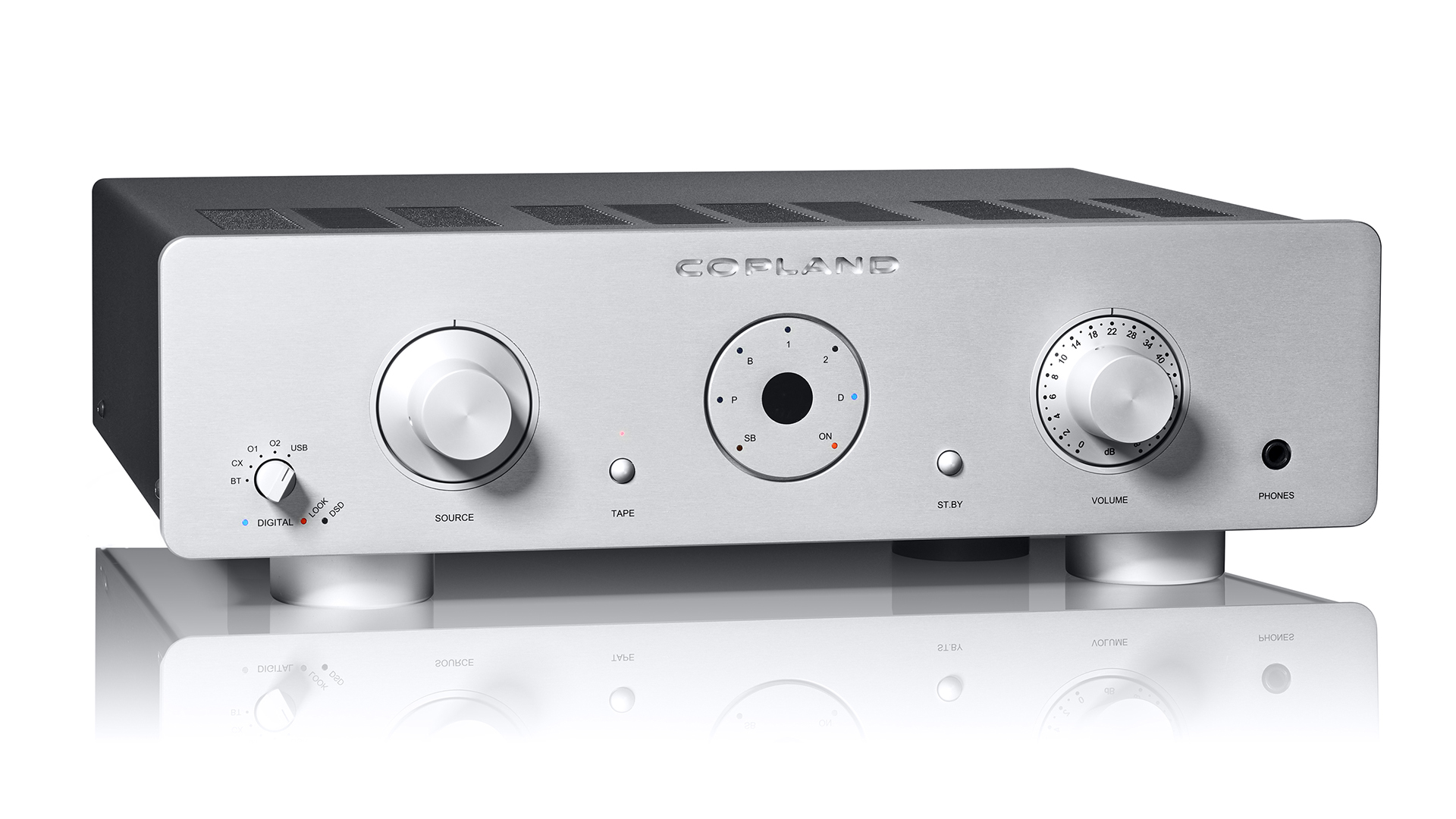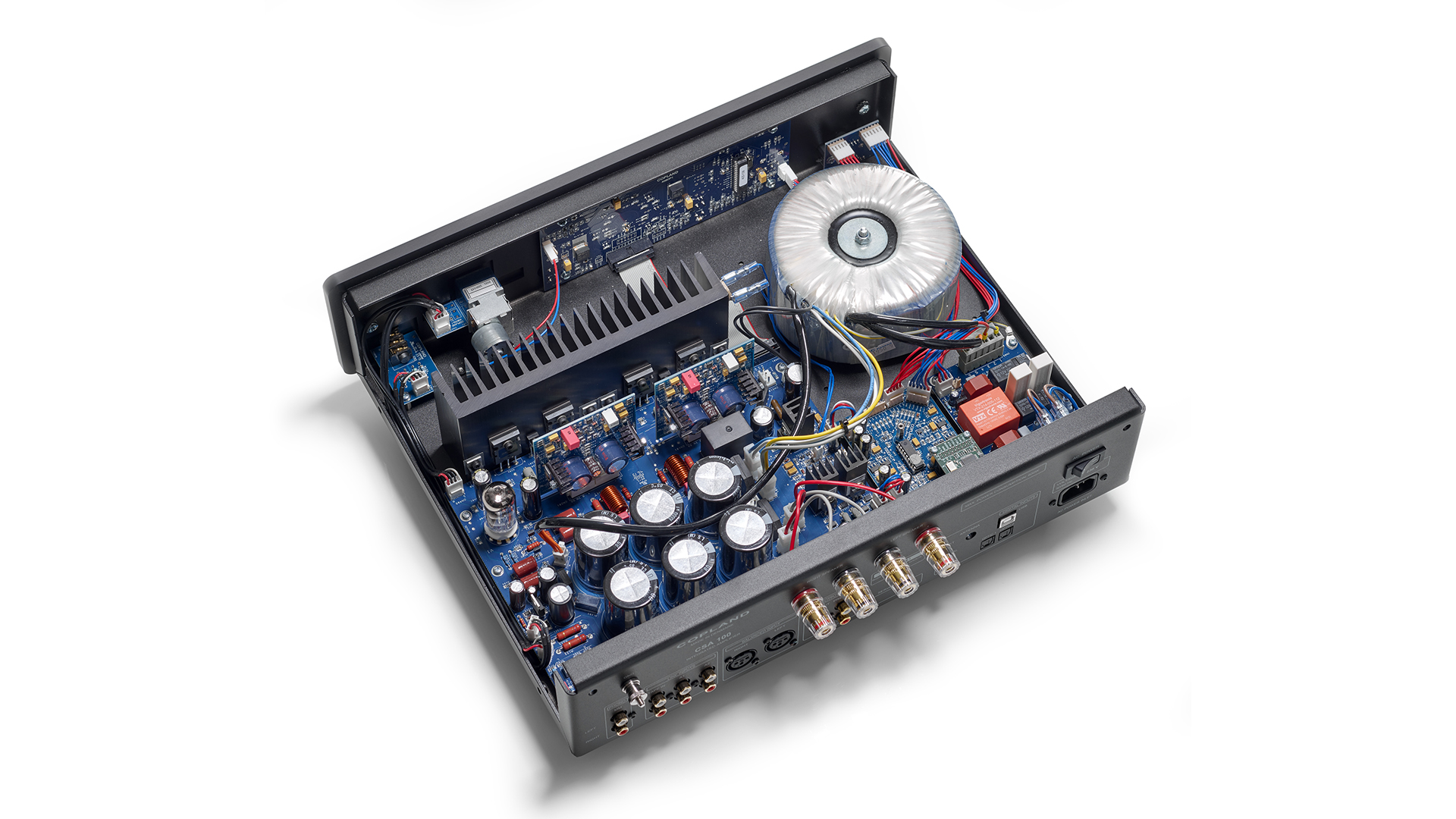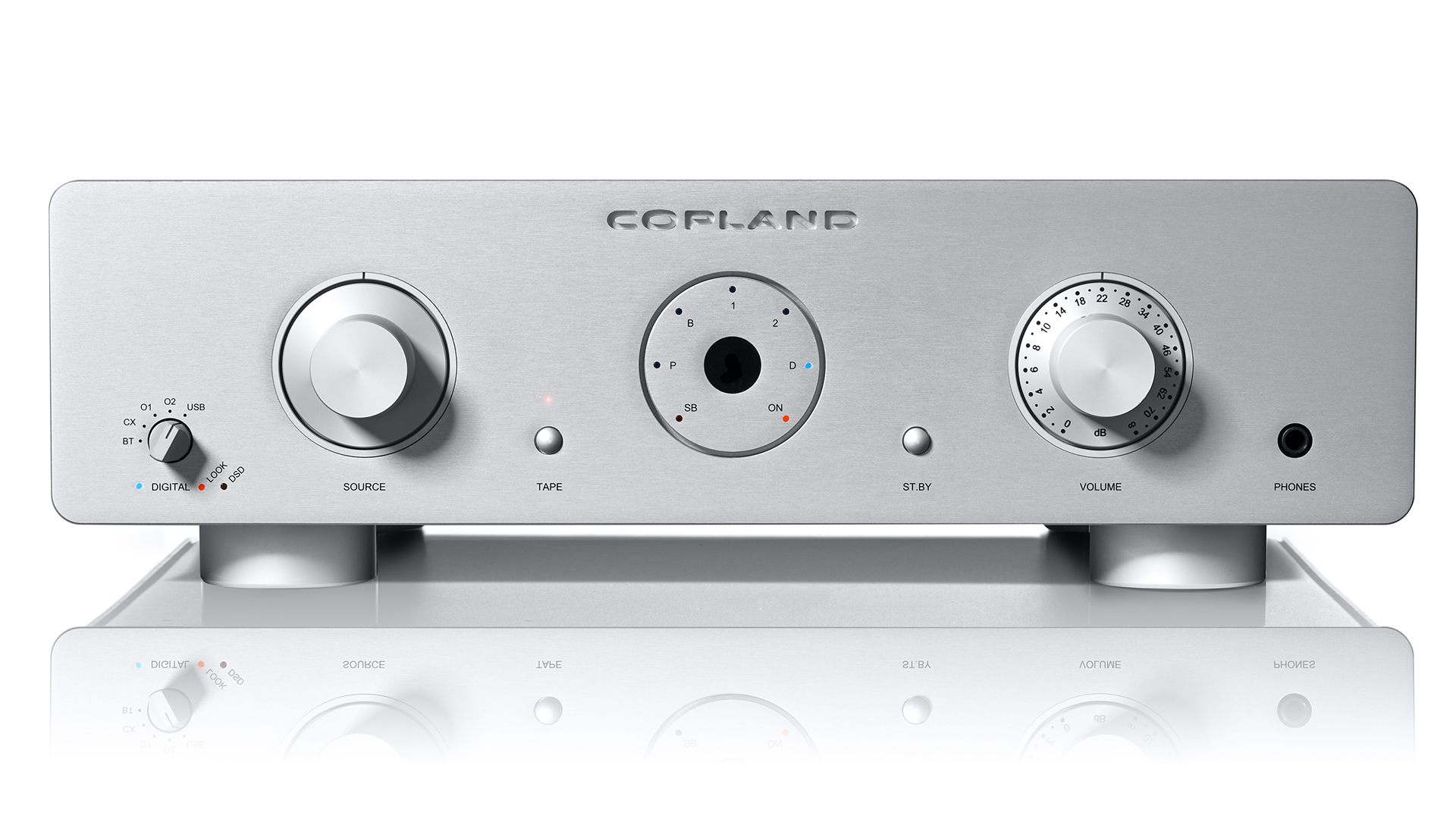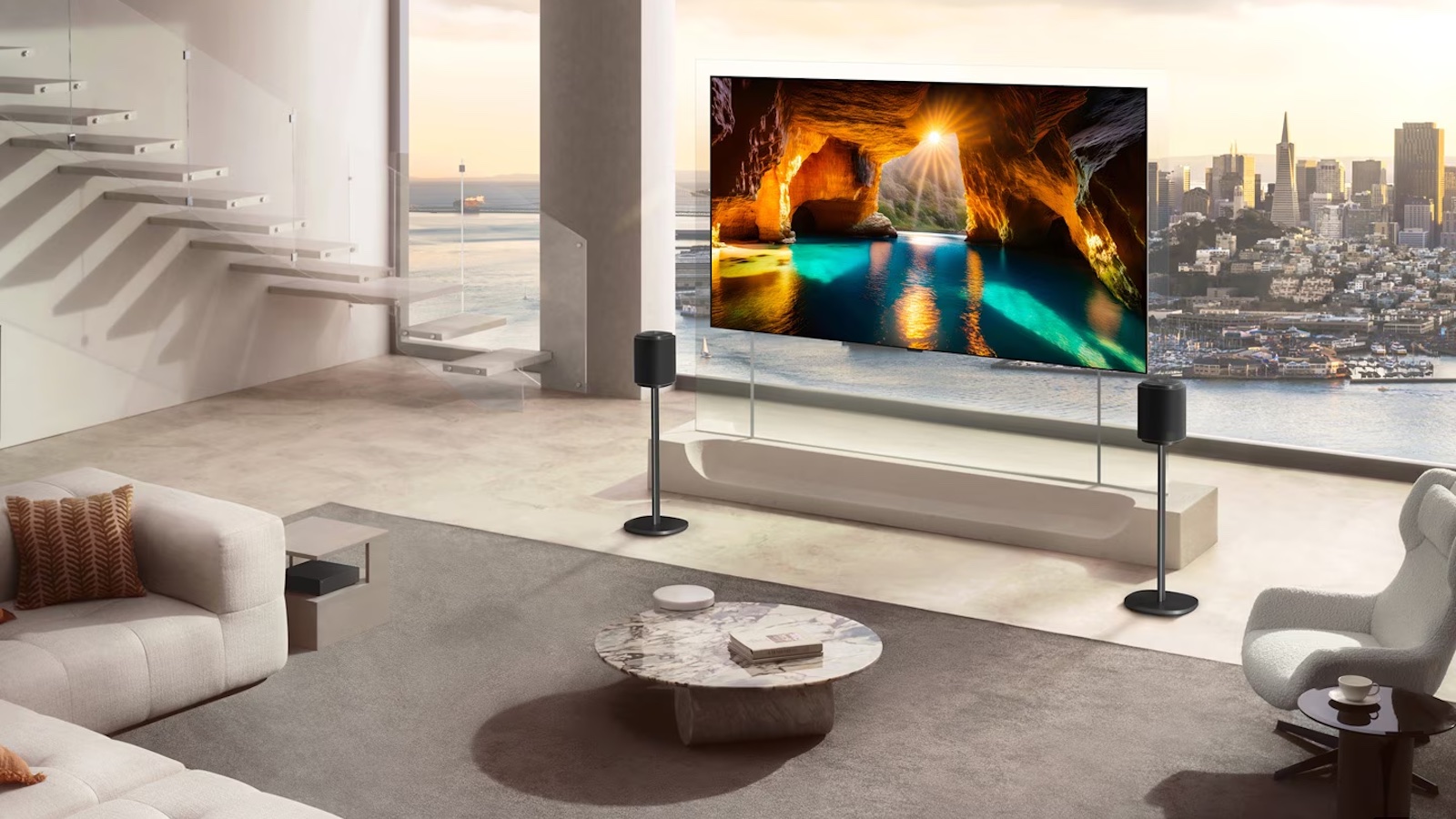What Hi-Fi? Verdict
The Copland CSA 100 is a well-equipped and impressively capable amplifier. It’s one of the class leaders at this level
Pros
- +
Transparent and detailed
- +
Agile and precise sound
- +
Good range of features
Cons
- -
No display
- -
Needs care with headphone matching
Why you can trust What Hi-Fi?
Copland is one of the unsung talents of the high-end hi-fi industry. Despite being in business for almost 40 years, the company has rarely grabbed the limelight. But that has more to do with the way the brand operates than the quality of its products.
This small Danish company only makes a limited range of electronics (often valve based) and goes about its business in an understated manner. Its products' life cycles tend to be fairly long, and new introductions are rare and done without much fanfare. So, when a new product does appear we’re keen to have a listen. And in the case of the CSA 100, we’re glad we did.
Features

As far as features go, this integrated could be all the amplifier most music fans will ever need. Despite retaining the company’s trademark clutter-free appearance, this elegant design packs in a digital module, headphone output and a phono stage into its well-constructed chassis.
At its core is a hybrid electronic design, which uses a single 6922 double triode valve in the line stage feeding a high power MOSFET power amplifier section. The result is a solid 100W per channel into an 8ohm load that rises to a healthy 180W as impedance halves.

Power 2x 100W (8ohms), 2x 180W (4ohms)
Inputs XLR, 3x RCA, coaxial, 2x optical, USB
Outputs 2x RCA
Bluetooth version aptX HD Bluetooth
Frequency response 10Hz – 150kHz
Dimensions (hwd) 13.5 x 43.5 x 37cm
Weight 14kg
Those figures suggest that the CSA 100 will be able to drive most speakers to serious levels in all but the largest of rooms. We try both our usual ATC SCM50 and the more price-compatible KEF LS50 Meta without issues.
There’s an impressive degree of connectivity here. For vinyl fans, a phono stage suitable for moving magnet or high output moving coil cartridges sits alongside single-ended (three) and balanced XLR (one) line-level inputs.
As for digital, there’s the usual trio of USB, coaxial and two opticals. These digital inputs feed an ESS Sabre ES9018 Reference DAC used in a quad mono configuration to improve resolution. The use of this chip means the CSA 100 is compatible with up to 32-bit/384kHz PCM files and DSD128 – enough to play just about any file potential users are likely to have.
The latest hi-fi, home cinema and tech news, reviews, buying advice and deals, direct to your inbox.
Build

It’s a shame the amplifier doesn’t have a proper display that shows the resolution of the incoming digital signal, though. All we have is a small LED indicating whether the signal is DSD or not.
Unusually for an amplifier of this type, Bluetooth (in aptX HD form) is on the menu. It’s a £198 optional extra, not fitted to our review sample, and is a box we would tick for anyone looking to bring the convenience of phones, tablets and computers into the equation.
There’s a preamp output for those that feel the need to add additional muscle and an un-attenuated line-out for recording purposes. Add a 6.3mm headphone socket and the CSA 100 should slot into pretty much any stereo set-up with ease.
If you really want to hear how good this Copland can sound you’ll need talented sources. We use our reference Naim ND555/555 PS DR music streamer and Technics SL-1000R/Goldring 2400 record player, but also draft in an Apple MacBook Pro loaded with Audirvana music software and plenty of hi-res music. Cyrus’s CDi integrated CD player also sees some use.
Of course, you don’t need to go to the extremes of the Naim or Technics to appreciate the Copland, but this remains a revealing and transparent amplifier, so it pays to give it a suitably capable signal feed.
Our review amplifier is a used demo unit, so doesn’t take long to come on song. If Copland’s use of a valve leads you to expect a stereotypical warm and comfortable presentation, you’ll be disappointed. The CSA 100, just like every other Copland product we’ve heard, doesn’t do that.
This is one of the most neutral sounding amplifiers we’ve heard at this price. It makes class leaders such as the Rega Aethos and Naim Supernait 3 sound a little uneven in comparison.
Sound

We listen to the third movement of Mahler’s Symphony No.2 and the Copland sounds right at home. It has a spacious presentation and renders an expansive soundstage. It’s a nicely layered image with instruments sharply focused. The presentation remains stable, too, even when the piece becomes demanding or volume levels rise.
We’re pleased with the CSA 100’s scale and authority, though both the Rega and Naim sound even more muscular when it comes to punching out crescendos. The Copland counters with sonic precision and a sense of fluidity that’s hugely appealing. It’s an impressively detailed performer, picking up low-level instrumental strands with ease.
We switch to Björk’s Homogenic set and the differences between the Copland and its main rivals are clear. This amplifier is all about clarity. It excels in the subtleties and displays a level of finesse and sonic sophistication that puts us in mind of far pricier alternatives. It sounds impressively natural with Björk’s distinctive vocals, communicating all the idiosyncrasies that make her delivery such a treat.
The presentation is nice and open, even in an album as densely produced as this. It’s an organised and entertaining sound, one that captures the various moods of the album really well. This isn’t an amplifier that stamps its signature all over the sound, and that means it isn’t long before we simply sit back and enjoy the music rather than being concerned with the mechanics of the hi-fi system.
If you value rhythmic coherence and dynamic punch above all else, its rivals move ahead. It’s not as if the Copland can’t step onto the dance floor; it's just that it prefers to stand on the side and tap its toes.

Our view of the amplifier stays positive whether we use the digital or analogue inputs. The digital module is a good one overall, though the USB input loses doesn’t quite match the coax or optical when it comes to dynamic expression and overall clarity. We think the module is broadly on a par with the better stand-alone DACs at around the £500 ($500) mark.
The phono stage is good too. It retains much of the insight, agility and energy of the line inputs and doesn’t add too much in the way of noise. Equally, we’re pleased to report that the headphone output is a good one, though its relatively high output impedance of 40 ohms means that you’ll have to match with care. Our long-serving Beyerdynamic T1 Mk2 headphones (600 ohms) work really well, but the Grado RS1 (32ohms) and Focal Stellia (35 ohms) sound a little uneven.
Verdict
Overall, the CSA 100 offers an excellent alternative to the established class leaders and has an equally convincing, but different, blend of attributes. It’s the kind of amplifier that puts the attention on the music rather than on itself, and that’s something we can certainly get behind.
SCORES
- Sound 5
- Features 5
- Build 4
MORE:
Read our guide to the best stereo amplifiers
Read our Rega Aethos review
Read our Naim’s Supernait 3 review
What Hi-Fi?, founded in 1976, is the world's leading independent guide to buying and owning hi-fi and home entertainment products. Our comprehensive tests help you buy the very best for your money, with our advice sections giving you step-by-step information on how to get even more from your music and movies. Everything is tested by our dedicated team of in-house reviewers in our custom-built test rooms in London, Reading and Bath. Our coveted five-star rating and Awards are recognised all over the world as the ultimate seal of approval, so you can buy with absolute confidence.

